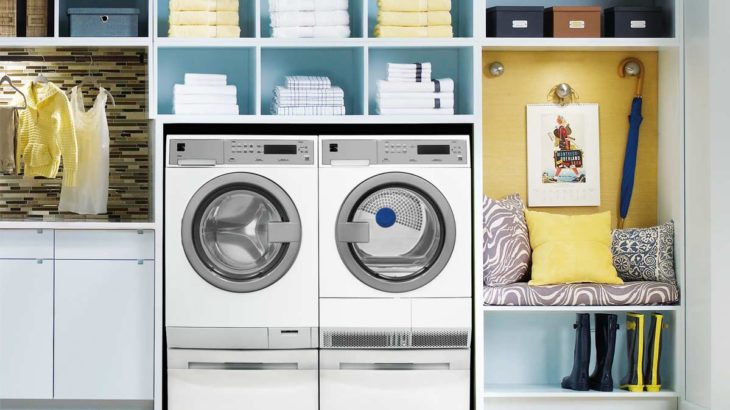So you’re in the market for another washer and dryer. You most likely as of now have a quick thought of the amount you need to spend and what highlights you have to help keep over your clothing load. The central inquiry left to answer is – to stack or not to stack? How about we investigate the upsides and downsides of each.
A stackable washer-dryer is a decent alternative for those searching for full-benefit clothing abilities, however with restricted space. Otherwise called a clothing focus, the stackable washer-dryer is an arrangement in which the dryer remains over the washer, as opposed to by it.
Source: Home DepotTypes of Stackable Washer-Dryer
Stackable washers and dryers arrive in an assortment of arrangements, given various elements:
Measure: The size recorded on a unit alludes to its width. The two most basic widths are 27 inches (equivalent to most standard, independent washers, and dryers) and 24 inches (which will fit all the more effectively in many storage rooms). The upside of a bigger machine is limit, while the benefit of a little device is, once more, accommodation and space reserve funds.
Voltage: Most stackable washer-dryer units require a 220-volt electrical plug, which you may need a circuit tester to introduce. Some reduced groups, be that as it may, just request an ordinary, 110-volt outlet. Register with your electrical circumstance before you purchase.
Washer design: Washers nowadays come in both best stacking and front-stacking setups. Top-stacking machines are more affordable and less demanding on your back, yet front-stacking machines are unmistakably more vitality effective, utilizing 66% less water. Both are accessible in stackable washer-dryer units.
Gas versus Electric: Dryers nowadays are controlled either by gas or power. If your house is now set up for gas, this may be an increasingly active choice, if not, it’s most likely best to run with an electric dryer.
Energy Rating: The Department of Energy appraises all stackable washers and dryers for their proficiency. Take a gander at the yellow sticker when looking. For the most part, the lower the number, the abler the machine. Increasingly active units do cost more cash, however, will spare you money on your bills down the line.

Source: Consumer Reports
Let’s see the Pros and Cons now:
Pros of Stackable washers and dryers
If you have limited space, then stackable washers and dryers would be the best choice for you as it is vertical and consumes less space. If you have any back pain and you are not advised to bend back and forth, then it would lower the times to turn for you.
Since stackable washers are front load washers, they utilize less water and vitality. The administration; Energy Star Certified ensure these units. In this way, shoppers can believe in their capacity to spare life which thus enables you to set aside some cash.
Source: Consumer ReportsCons of stackable washers and dryers
Costly – Front load washers are more expensive than their best load partners. Even though stackable washers and dryers are not as much as remain solitary front loader models, they can, in any case, be somewhat expensive.
Capacity – Because stackable washers are minimal, they will, in general, have less space for stacking things. On the off chance that you have an expansive family this could be an issue. Be that as it may, for a solitary individual or one couple, a stacking washer and dryer could do the trick.
Conventional – Many stackable front loaders don’t contain the fancy odds and ends found on different washers. The reduced washers are all the more straight to the point and give standard wash settings to a worthy clean.
Raised Dryer – With the dryer being stacked over the washer, this could introduce a test to the individuals who are short. The help of a stool would be essential to utilize the control board. Moreover, a man in a wheelchair would not have the capacity to stack their washer and dryer.
